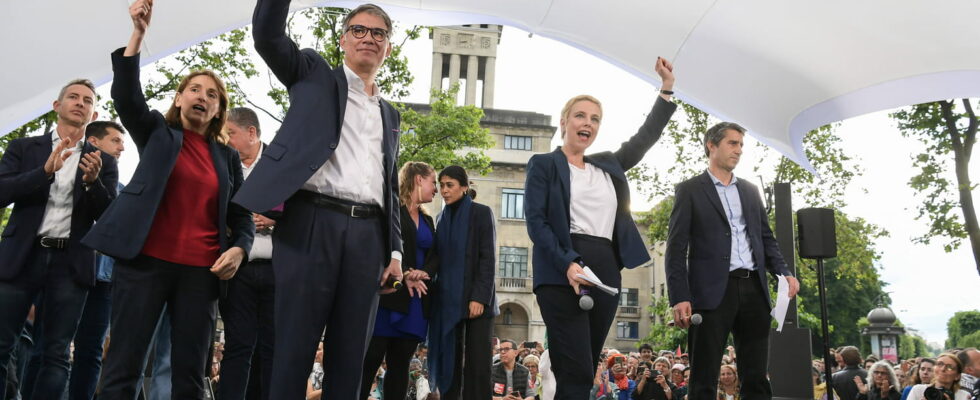A few days before the first round of the legislative elections, scheduled for Sunday June 30, the polls suggest the scenario of a strong electoral performance for the left and its New Popular Front.
It did not take long, following the European elections of June 9, 2024, which saw the National Rally come first with 31.3% of the vote, to see the left come together. Faced with the threat from the far right, whose ideas are radically opposed to theirs, the various left-wing parties have decided to unite under the banner of Popular Front. A name borrowed from the Popular Front of 1936 born before the legislative elections to counter the “fascist threat”. Nearly 90 years later, the left-wing forces, starting with France Insoumise and the Socialist Party, have therefore chosen to propose a common program for the early legislative elections of June 30 and July 7.
Scattered during the European elections – with more or less convincing results (13.8% for the Awakening Europe list of Raphaël Glucksmann or 9.9% for the France Insoumise list led by Manon Aubry and 5.5% for the EELV list carried by Marie Toussaint) -, the different left-wing forces, despite some bickering, managed to agree to become one in a very large majority of the 577 constituencies.
This unity, while certainly fragile, does indeed have a notable reception in public opinion. The Popular Front, supported by the greatest current figures of the left (Mélenchon, Bompard, Aubry, Faure, Autain, Tondelier, etc.), enjoys excellent momentum in the polls. Credited with 22% of voting intentions on June 10, the day after the European elections, it reached 28% a week later, on June 17, according to a survey by the Ifop institute. Although it remains behind the RN, the Popular Front has seriously reduced the gap with the far-right, going from 12 to 5 points in the space of eight days.
In the second round of these legislative elections, on July 7, the united left could well take advantage of hypothetical roadblocks to the RN to double or triple the number of its elected representatives in the National Assembly. It is likely that Various Left candidates, but also from the presidential majority, will call to vote against the RN in the event that the candidate of the New Popular Front engaged in a duel with the extreme right is not an LFI candidate. Jean-Luc Mélenchon’s party is considered by the immense majority of center voices, which are raised in this campaign, as an extreme left party, judged even by the latter as “outside the republican field”. It is on this subject that the equation of the results of these legislative elections is being played out for the left: what will be the reserve of votes for the PS, EELV, PCF or LFI candidates?
For the moment, projections allocate between 190 and 235 parliamentary seats to representatives of the Popular Front. This is obviously not enough to obtain an absolute majority – set at 289 seats – but will it make it possible to beat the far right and obtain a relative majority? The dynamic favorable to the Popular Front may lead it to consider, above all, that the National Rally will possibly have difficulty finding allies between two rounds of the legislative elections. In this case, the united left may start dreaming of an absolute majority or a coalition, to govern in a few weeks. Which would be a first since the Cazeneuve government in 2017, under the presidency of socialist François Hollande.
